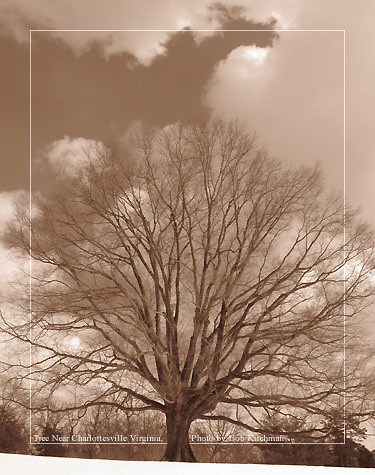
Volume VII, Issue VI
A Case for Vision III
You may nave noticed that THYME has departed lately from being a simple parody of the 'other' weekly news magazine. The reason is twofold. First of all. it becomes a bit sophomoronic to parody a magazine that asks on its cover: "Can Anyone Stop Hillary?" I can name about six or seven great candidates without thinking about it. The media won't rush to report them but they are out there. If they want to reduce it to Clinton vs Christie this early in the game, so be it. The Alternative Citizen Media will continue to present a plethora of far more interesting people. In an age of Alternative Media perhaps we can make the game exciting again. We at THYME will do our best! Second, the times demand a more serious approach. We are confronted today by very real problems. If we can draw from history and the voice of experience, we must do so. The political class and the media seem intent on silencing certain voices in the debate. It is those very voices, may I suggest, that we need most to listen to. The country today seems intent on allowing itself to crumble. Noble virtues are denigrated while the vague goal of 'self actualization' has become the subject of ardent pursuit. Relativism is the rule and 'tolerance' the supreme virtue. Clearly we are a nation in distress. Looking back into history, can we find evidence that we as a people have faced similar peril? If so, what lessons might we learn to help us in the struggle for America today? Consider the condition of the nation in the turbulent time following the Revolution.
As the Eighteenth Century drew to a close there were almost a million new settlers to the West of the Blue Ridge Mountains. In 1803, France sold the Louisiana Purchase to the young nation and Thomas Jefferson, essentially doubling the size of the United States. Lewis and Clark's reports of this vast land would only serve to further fuel the drive for Westward expansion. While the future looked bright for the country, the future of the Christian Faith seemed to be one of slowly diminishing light. Church attendance was dropping off. New ideas from Europe challenged the narrative of Faith and it looked like the influence of Faith would fade, even as the New World filled itself. An Episcopal preacher in the Carolinas said: "How many thousands . . . never saw, much less read, or ever heard a Chapter of the Bible! How many Ten thousands who never were baptized or heard a Sermon! And thrice Ten thousand, who never heard of the Name of Christ, save in Curses . . . ! Lamentable! Lamentable is the situation of these people." Though the land was rich in promise, the spiritual condition of her people was quite impoverished. Immorality and vice abounded as settlement continued. Though no national media paraded it, the dark side of human nature reigned in many remote places. In the wilds of Kentucky, in what would become Logan County, there was a place called Rogues' Harbor. The Digital History of North Carolina describes it as follows: "Here many refugees from almost all parts of the Union fled to escape justice or punishment. . . . It was a desperate state of society. Murderers, horse-thieves, highway robbers, and counterfeiters fled there, until they combined and actually formed a majority." -North Carolina Digital History
But something happened in the very fabric of our nation about that time that would shape our future and chart our course well into the Centuries to follow. There was still much immorality and vice to be found, but in 1799 a Prebyterian minister wrote: "We have heard from different parts the glad tidings of the outpourings of the Spirit, and of times of refreshing from the presence of the Lord. . . . From the East, from the West, and from the South, have these joyful tidings reached our ears." The Second Great Awakening came to life as men like James McGready brought the message of Hope and Redemption to the frontier. McGready did not fear to enter places like Rogues' Harbor to speak of: "Heaven and its glories, Hell and its torments." In 1796, McGready was Pastoring three churches in Southwestern Kentucky. In what can only be attributed to a mighty move of the Spirit of G-d, hundreds of people at a time were finding a new and refreshed Faith across the frontier in camp meetings and revivals. In the South and the West. Barton W. Stone was the Presbyterian Pastor of the Cane Ridge and Concord churches, northeast of Lexington, Kentucky. Stone observed McGready's work in Logan County and laid plans for a similar meeting for August 1801 at Cane Ridge. Over 10,000 people attended that meeting. Some estimates put the crowd as high as 25,000. The flames of revival were spreading, leaping now into Tennessee!
Stone observed that Presbyterians, Baptists and Methodists were all joined together at this great meeting, singing the same songs and experiencing the same Spirit! "The rough, violent, irreligious frontier, which many felt threatened to undo the morals of the new nation, was being tamed by the Lamb of God." In the East, a similar manifestation of the Spirit of G-d was taking place. Though many prayed for revival, the rise of Universalists, Unitarians and Deists in the region had denied the basic teachings of Christianity and dulled the impact of Faith. Jonathan Edward's Grandson Timothy Dwight observed of the period during and after the Revolution as follows: "The profanation of the Sabbath . . . profaneness of language, drunkenness, gambling, and lewdness, were exceedingly increased; and, what is less commonly remarked, but is not less mischievous, than any of them, a light, vain method of thinking, concerning sacred things, a cold, contemptuous indifference toward every moral and religious subject." But the fires of Revival were stirring in the East. Though this movement was quieter in some respects, it's deep roots would manifest themselves in cultural reform. The abolitionist movement, for example, would come out of this renewed mind. Pastor Alvan Hyde wrote: ". . . A marvelous work was begun, and it bore the most decisive marks of being God’s work. So great was the excitement, though not yet known abroad, that into whatever section of the town I now went, the people in that immediate neighborhood, would leave their worldly employments, at any hour of the day, and soon fill a large room. . . . All our religious meetings were very much thronged, and yet were never noisy or irregular. . . . They were characterized with a stillness and solemnity, which, l believe, have rarely been witnessed. . . . To the praise of sovereign grace, l may add, that the work continued, with great regularity and little abatement, nearly eighteen months."
"And Jesus went about all the cities and villages, teaching in their synagogues, and preaching the gospel of the kingdom, and healing every sickness and every disease among the people. But when he saw the multitudes, he was moved with compassion on them, because they fainted, and were scattered abroad, as sheep having no shepherd. Then saith he unto his disciples, The harvest truly is plenteous, but the labourers are few; Pray ye therefore the Lord of the harvest, that he will send forth labourers into his harvest." -- Matthew 9:35-38
As thousands embraced Faith, this Scripture became a reality for the American churches. The Baptists ordained lay ministers to meet the needs of the growing church in the young nation. The Methodists created the institution of the Circuit Rider. Young ministers would literally cover a 'circuit' of churches, riding on horseback from community to community. They were mostly young and single, and had to be in pretty good health. They would be out on the circuit for weeks at a time, perhaps returning to the same community every five weeks or so. They would often come upon a family new to the frontier bringing in the harvest or doing chores and join in as a means of building relationships for the spread of the Gospel. Often the young minister would find a warm welcome and spend the night with the family. He would return on a regular basis and hold services. A congregation might begin to form and build a temporary meeting place, often a 'brush arbor,' which was a simple pole structure covered with brush. Today there are many litle churches that have placed a more permanent building in place of the brush arbor. They may still bear the name of the family that provided the land and materials for the first congregation.
Indeed the seeds had been planted for a movement of G-d that would minister to the nation through a terrible Civil War and well into a Century where America would be thrust into the world's great conflicts. Revival came to the colleges, beginning in Virginia's Hampton Sidney College and even occurring at places like Yale. Men like Charles Finney and D. L. Moody would continue to preach the Gospel, adapting their methods to minister to the nation that grew in the Nineteenth Century, but the message remained the same. Eventually America would become a great sender of missionaries into the world. The Gospel would go forth to touch millions and in doing so would bring hope and purpose in many places around the globe.
In one of my childhood books is the story of a Methodist Pastor who arrives at a new parsonage and with his children plants a tree. The tradition of that Faith is that ministers will move on to new pastorates, so the man is planting a tree that he himself will never sit in the shade of. It is clearly an act of kindness intended to bless a family like his that will follow... in the far distant future. I love that story because it is a planting of hope and belief that looks beyond the here and now. It is a remnant of that far-looking faith that once long ago stood face to face with America's endless frontier.




No comments:
Post a Comment